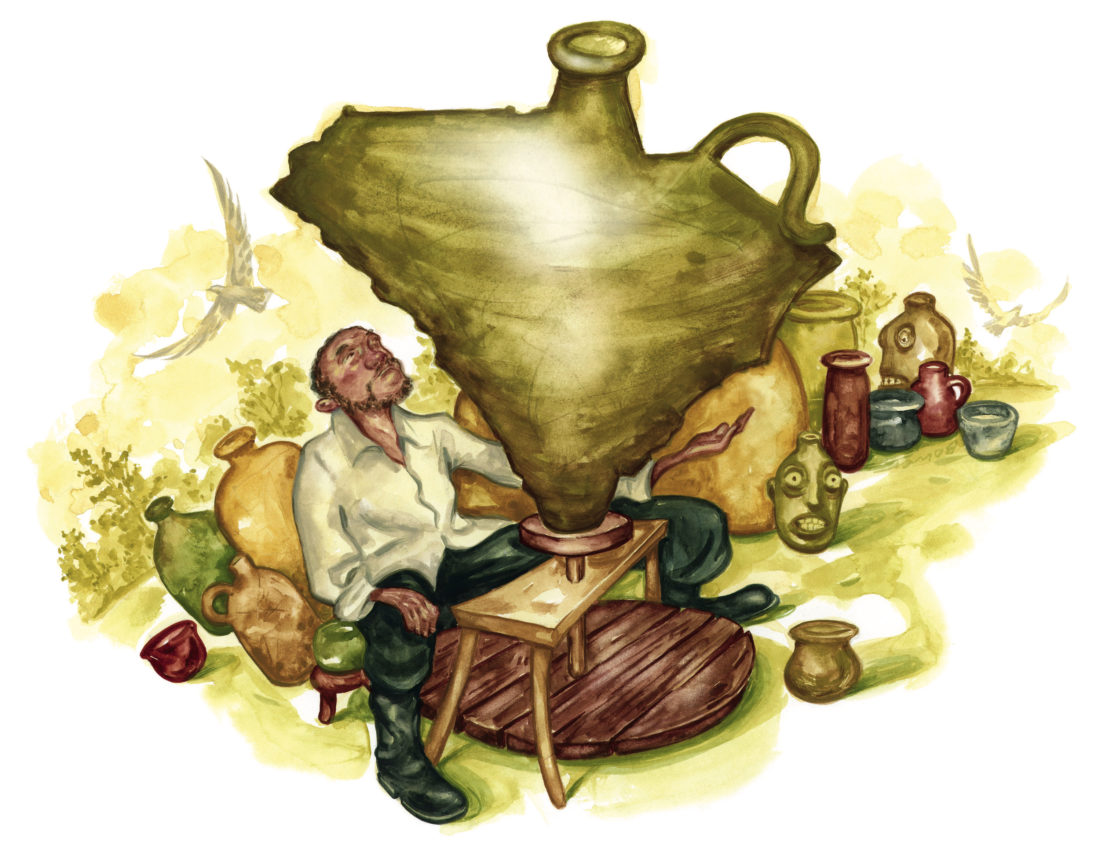Beneath the rim, a handwritten notation: “when you fill this Jar with pork or beef / Scot will be there; to get a peace, – / Dave.” In a literal sense, the poem doubles as instructions for how to use the alkaline-glazed container, but when David Drake, an enslaved potter in Edgefield, South Carolina, inscribed it on the storage jar in April 1858, it was an act of defiance. Anti-literacy laws forbade both enslaved and free people of color to learn to read or write. Drake’s jar is part of Hear Me Now, a powerful exhibition on Edgefield pottery at the Metropolitan Museum of Art in New York City (opening September 9). “Edgefield stoneware is known regionally, but this project will present these objects—and the history and makers behind the stoneware—to new audiences,” says Adrienne Spinozzi, one of the curators of the more than fifty objects on display, many of them never seen before outside the South. Drake’s nineteenth-century masterwork sits on view beside vessels by lesser-known—or still-unknown—artists who also demonstrated their literacy, bravery, and adeptness at the potter’s wheel. “Face jugs,” or vessels styled with grimacing expressions, are unmissable, including the mid-nineteenth-century pot treasured by Mamie Deveaux, an African American fortune-teller who practiced in Savannah. Works by modern-day artists including Simone Leigh and Robert Pruitt sit in discourse with the historical objects, “exploring this rich and complicated history,” Spinozzi says. “They’re literally reshaping the conversation about Edgefield stoneware.” metmuseum.org
Southern Agenda
History by Hand

Illustration: Tim Bower

